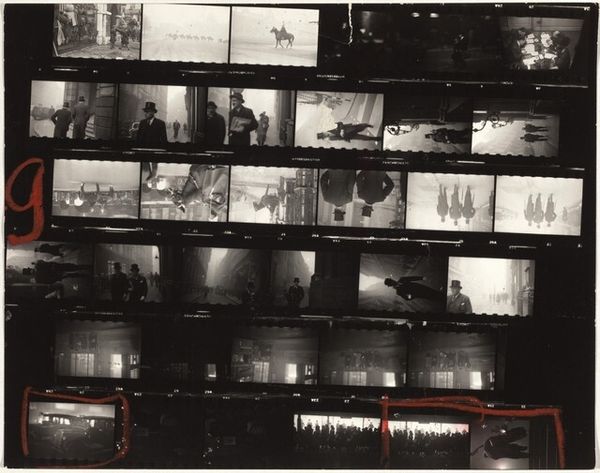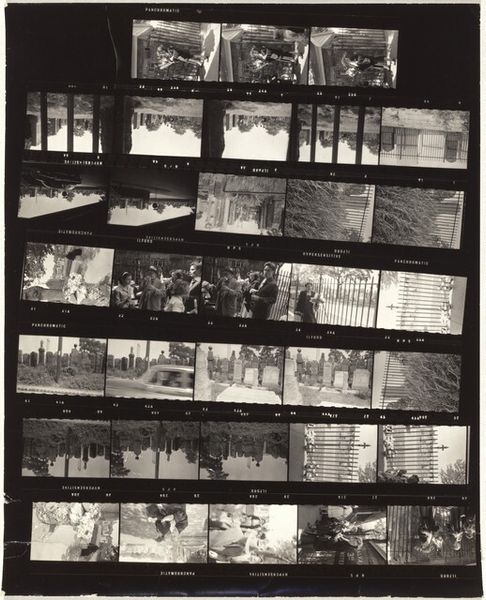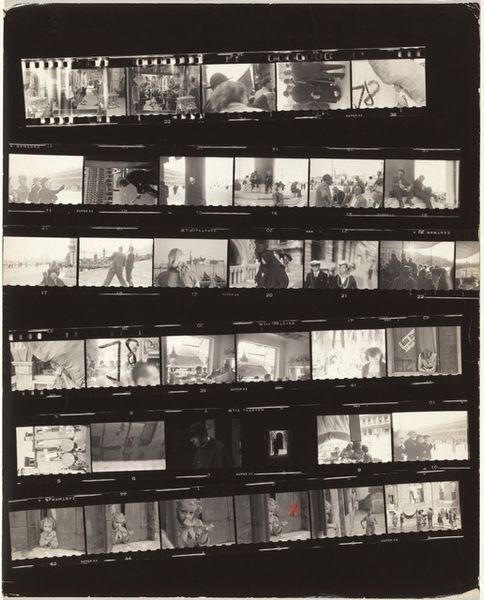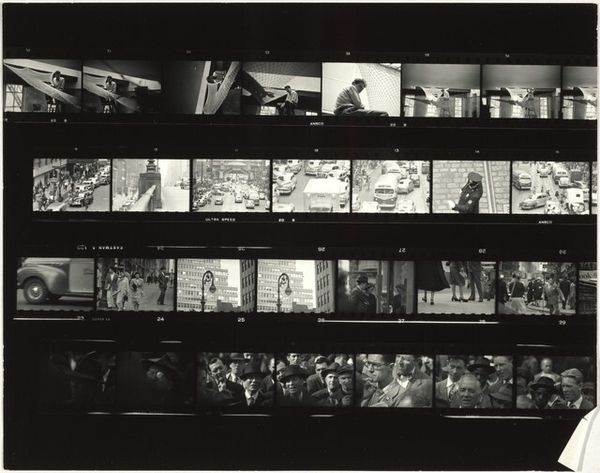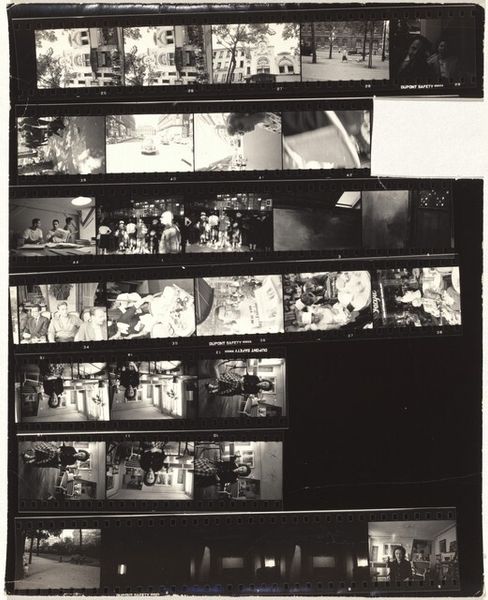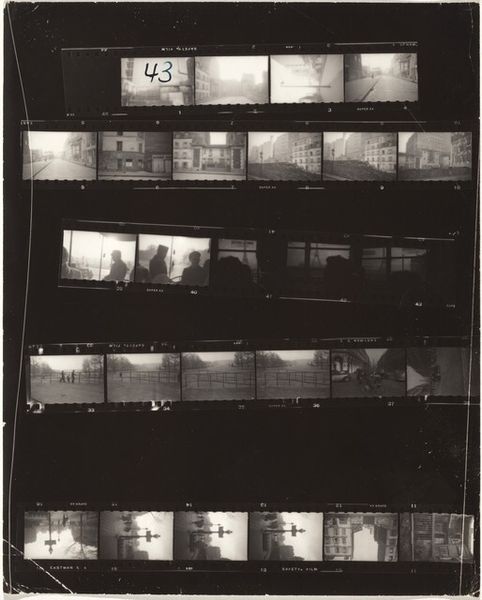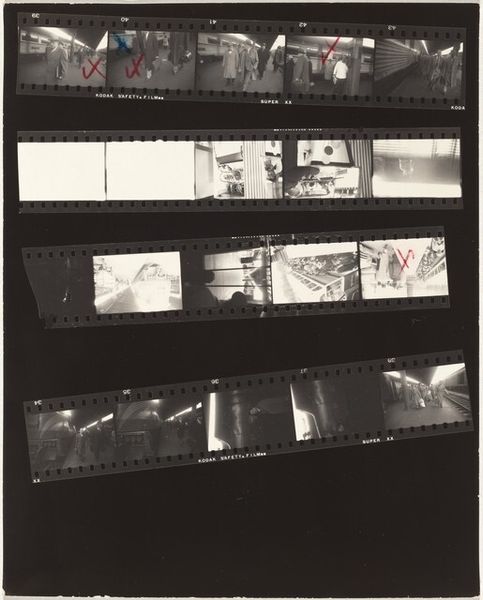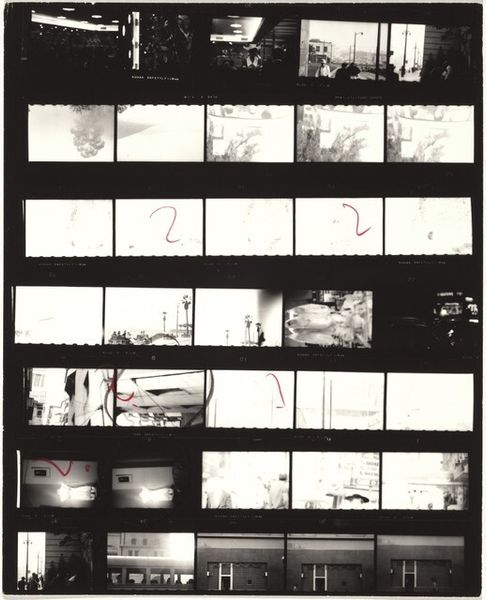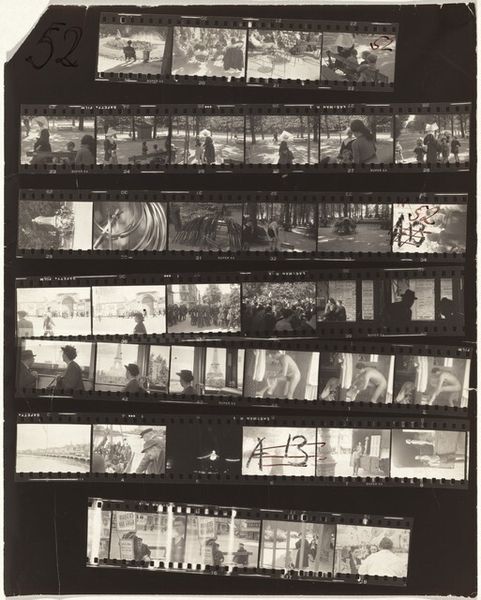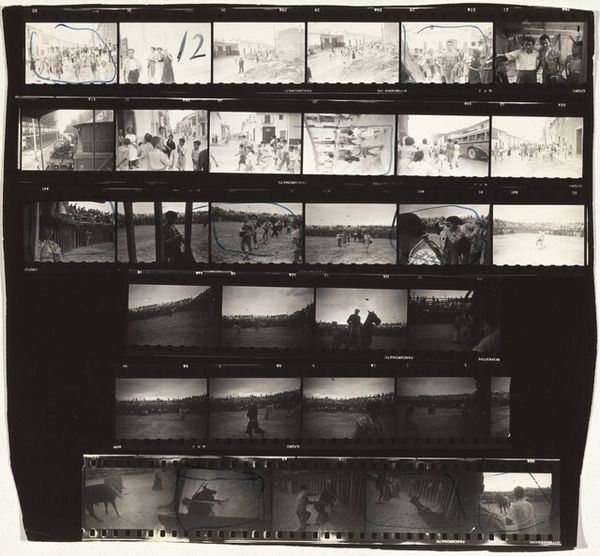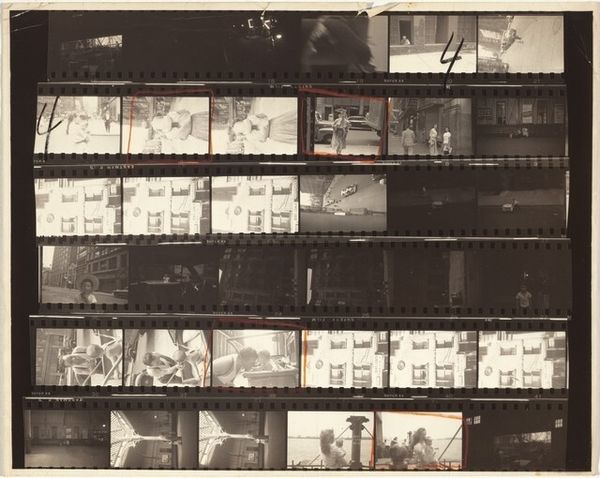
Dimensions: overall: 20.2 x 25.3 cm (7 15/16 x 9 15/16 in.)
Copyright: National Gallery of Art: CC0 1.0
Curator: Here we have Robert Frank's "Paris 91B", a gelatin-silver print he created between 1951 and 1952. It presents several rows of undeveloped film stills from the streets of Paris. What's your initial read? Editor: Immediately, the sheer materiality strikes me. It feels raw, almost like an unearthed artifact. The stark monochrome and visible film grain contribute to a feeling of fragmented memory. Curator: I agree. Frank deliberately showcases the medium itself, highlighting its structural properties. Notice how the sprocket holes and frame numbers become visual elements, almost rhythmic repetitions across the surface. The contrast of light and dark drives it. Editor: The "91" scrawled on one of the frames—what do you think that signifies? It calls attention to how meaning is constructed. Are these selections a random snippet, or deliberately curated as evidence? Curator: Intriguing thought. As an iconographer, your perspective naturally leans towards deciphering symbolic intent. From a formal viewpoint, the numbering creates an interplay between chance and intentionality, complicating how we perceive Frank’s choices. The number could point to something we cannot see here but, nonetheless, something from Frank's vision, giving his street captures a mysterious bent. Editor: For me, it’s how these disparate scenes co-exist on the film strip—collective moments from ordinary lives intersect, creating a sense of time passing, history accumulating, and Paris through Frank’s outsider perspective. The film looks like how memory feels—snippets of clear focus amid blurriness. Curator: Absolutely. The composition allows Frank to dissect temporality and perception. The placement of each frame, the transitions from one scene to the next, creates a visual rhythm. In terms of semiotics, the visible medium alludes to reality as something contingent, open to interpretation, not just simply reflected. Editor: And Frank seems to relish leaving those layers visible—challenging the clean, polished presentation of traditional photography. It reflects an interest in revealing the process, embracing imperfection to expose a more immediate kind of reality. A little voyeuristic, no? Curator: Certainly a challenge, to us and photography's standards, indeed! And the city through an unfiltered lens. Thank you. Editor: Thanks to you!
Comments
No comments
Be the first to comment and join the conversation on the ultimate creative platform.
